Jimmy Yancey was not specifically the father of Boogie Woogie, and he would never have claimed to be in his modest style, but he was one of the earliest to really define the genre and influence other pianists who would go on to record it long before he died. He was born in Chicago, Illinois to musician Moses R. Yancey (the last name was sometimes seen as Yancy) of Virginia and Irene Owsley of Kentucky. He was the fourth of seven children, including Maggie J. (9/1893), Harry (11/1895), Alonzo (5/1897), Theodore Wilson (1904), Beatrice (1907) and John W. (1910). Two other siblings died in infancy, one in the 1890s and one after 1900.
The year of Yancey's birth is up for grabs, even though February 20 is consistent. The traditional cited date has been 1898, as seen on a marriage license and his death certificate. However, one passport application in 1913 shows 1895 (perhaps inflated for travel to some countries that had laws about under-aged performers), the 1910 census suggests 1901, and his 1918 draft card suggests 1900 (if he were born in 1901 he should not have filled one out). Jimmy should also appear on the June 1900 Federal census with his siblings but clearly does not, further suggesting a 1901 birth, and matching three, the number of living children Irene had listed at that time. Even odder is one passenger manifest from 1914 that has a 1903 birth year on it (which if the ages and dates are taken into account could be 1902). Even at his death the writer of his obituary acknowledged that Yancey was supposed to be around 51, but thought he was actually in his sixties.
The other Yancey siblings, including his performing brother Alonzo, curiously did not have this type of major age variance in their collective official records. The overall average and other evidence for Jimmy seems to point to 1901 as his best possible birth year. One potential reason for inflating his age would be to appear closer to the age of his wife, since the first consistent anomalies appear when he married her. A note of minor interest - his signature suggests that he may have been left-handed, something that could have contributed to his great playing success in the Boogie-Woogie genre.
Yancey's father Moses sang and played guitar, reportedly was a "buck and wing" dancer, and was one of the early black performers in Vaudeville working some of the minor circuits. He was listed as a musician in the 1900 enumeration. However he appears to have died around 1910. This becomes a bit confusing as in the 1900 census he and Irene show as having been married for six years, and in the 1910 census, she shows as still being in her first marriage for eleven years, not widowed. Even more curious in the 1910 record, Moses was born in Wisconsin, but all of the siblings show their father with a birthplace of Virginia.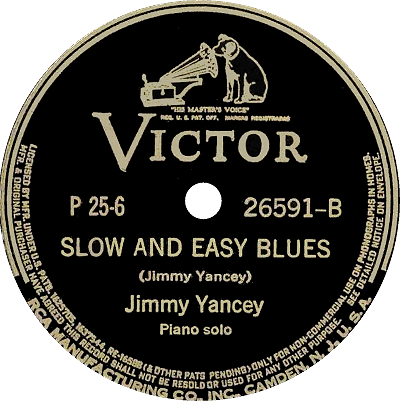 Perhaps the wrong person was giving information to the enumerator that day. In any case, Moses was not found in the 1910 record.
Perhaps the wrong person was giving information to the enumerator that day. In any case, Moses was not found in the 1910 record.
 Perhaps the wrong person was giving information to the enumerator that day. In any case, Moses was not found in the 1910 record.
Perhaps the wrong person was giving information to the enumerator that day. In any case, Moses was not found in the 1910 record.Jimmy got involved in his first stage show in Chicago in 1906, The Man from Bam, staged at the Pekin Theater, one of the earliest African-American owned theaters in the country. His father played guitar in the pit orchestra for this production and others at the Pekin. This show marked the beginning of at least a few years of shows in which Jimmy worked as a singer, dancer and child actor. His older brother Alonzo would also become a pianist during the ragtime era. In the 1910 census Jimmy's older brother, Harry, is shown as an actor in a traveling show, and neither Jimmy nor Alonzo are credited with a performance association. Jimmy did travel as a singer and dancer eventually, one of his better opportunities being with the Cozy Smith Troupe and a group led by ragtime banjo player Burt Earle on the Orpheum Theater Circuit.
Through Earle, Yancey was afforded an opportunity to travel to England in 1913 where the group gave a command performance in Buckingham Palace for King George V, Queen Mary, and the royal family. While on the trip in March of 1913 the troupe had an opportunity to travel to Russia. In order to do so, it appears that Earle had to inflate Jimmy's age a bit for him to secure a passport from the American Embassy in London. The March 28 document showed Jimmy to have been born in 1895, and was a diminutive 4 feet 5½ inches, quite small for an 18-year-old.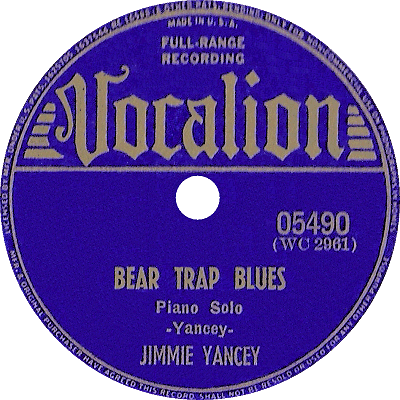 His "identification" was a letter from Earle saying it was so. Yet on the return trip to New York in January 1914, Jimmy claimed to be only 11. His passport evidently was not checked when he returned.
His "identification" was a letter from Earle saying it was so. Yet on the return trip to New York in January 1914, Jimmy claimed to be only 11. His passport evidently was not checked when he returned.
 His "identification" was a letter from Earle saying it was so. Yet on the return trip to New York in January 1914, Jimmy claimed to be only 11. His passport evidently was not checked when he returned.
His "identification" was a letter from Earle saying it was so. Yet on the return trip to New York in January 1914, Jimmy claimed to be only 11. His passport evidently was not checked when he returned.It was not until Jimmy's return from this trip that he ventured into playing the piano, encouraged by Alonzo who had become a very credible ragtime player. So at age 14 or 15, Jimmy Yancey discovered what he would become best at. Alonzo was likely able to instill the fundamentals of basic harmony and theory to Jimmy, but he was largely self-taught or learned by rote. In recordings of the 1940s they proved to have very similar playing styles even with a disparate repertoire. The Boogie or Boogie-Woogie style had been developing down in New Orleans and Texas, so chances are that he had heard many players from that area during TOBA (Theater Owner's Booking Association) vaudeville tours of the mid to late 1910s. But Jimmy had also heard all kinds of blues in Chicago as well. While boogie chord patterns are based on the 12-bar blues riff, they tend to drive much harder with the "eight to the bar" sixteenth note left hand patterns.
The style that Jimmy developed over the next several years was a bit more laid back and genteel than that of some other players. He could drive it hard, but he also could make more with fewer notes when the mood called for it. In essence his approach was more subtle than many piano pounders were turning out in the late 1910s and 1920s. Jimmy's technique was limited by the lack of formal training, and sometimes his subtlety was mistaken as simplicity and therefore downgraded. Yet everything he did was intentional and there was an elegance in the style that Yancey developed. Jimmy also did less of the walking bass than he did triad-based left hand patterns.
In the beginning of this phase of his life, still in his late teens, Yancey played largely for himself, rarely performing for others except the occasional party. He would never be a great facile or technical player, but many of the primitive elements he picked up early on made him one of the more subtly rhythmic performers in the genre.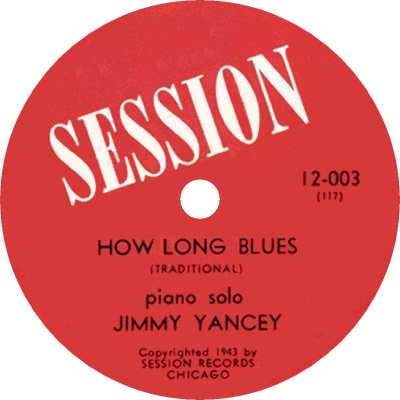 His September 1918 draft record, for which he possibly stuck with his inflated age and had to fill out, shows him working for the Garfield Theater based in New York City, with Bert Earle still as his employer. His mother Irene is mentioned as a contact, but his future wife Estella Harris, who claims she had performed with him as early as 1913, is not shown.
His September 1918 draft record, for which he possibly stuck with his inflated age and had to fill out, shows him working for the Garfield Theater based in New York City, with Bert Earle still as his employer. His mother Irene is mentioned as a contact, but his future wife Estella Harris, who claims she had performed with him as early as 1913, is not shown.
 His September 1918 draft record, for which he possibly stuck with his inflated age and had to fill out, shows him working for the Garfield Theater based in New York City, with Bert Earle still as his employer. His mother Irene is mentioned as a contact, but his future wife Estella Harris, who claims she had performed with him as early as 1913, is not shown.
His September 1918 draft record, for which he possibly stuck with his inflated age and had to fill out, shows him working for the Garfield Theater based in New York City, with Bert Earle still as his employer. His mother Irene is mentioned as a contact, but his future wife Estella Harris, who claims she had performed with him as early as 1913, is not shown.While developing his style, Jimmy was also looking for some stability. So he decided to "quit show business," and stay put in Chicago for a while to pursue another one of his passions - baseball. During and after the first World War, in which he did not serve, Yancey played for a Negro league team, the Chicago All Americans. Details are unclear as to when he abandoned this, but with some of the former players returning in early 1919 it's likely he then started to focus more on the music and less on baseball. Jimmy started playing at house parties, and then by invitation at some of the public venues in south Chicago. As one of the few working in the Boogie style his reputation slowly grew as did his repertoire, much of it his own work but some adaptations of other tunes he had learned.
It should be noted that there was another player in town who had come up from Kentucky in the late 1910s. James Louis (Jimmy) Blythe was receiving training from veteran musician Clarence M. Jones and developing his own subtle boogie-woogie style. Blythe was born in 1901, so the two were most likely the same age. By 1922 Blythe would be applying vestiges of it to piano rolls. While Blythe has been acknowledged as likely the first player to record boogie-woogie piano, and while other later performers cited him as an influence, it is likely that he and Yancey developed their respective styles and riffs simultaneously. How well they knew each other is unclear, but they did run in the same circles to some degree.
The January 1920 census shows that Irene (as Irine) had remarried around 1911 to Adam Powell (as Add), a steel mill worker. However, it also applied the Powell last name and Texas birthplace to the demographics for all of Irene's children still in the household, making this record hard to trace (see attribution below). Three more children had been added to the team roster,
including little Irene (1912), Henry (1914) and Thomas (1916). They are shown in living Chicago. At that time Jimmy was shown as 20, although he was a few weeks short of his actual (perhaps 19th) birthday. This again causes some confusion on the year of birth, but is consistent enough with 1900/1901 to further accept that.
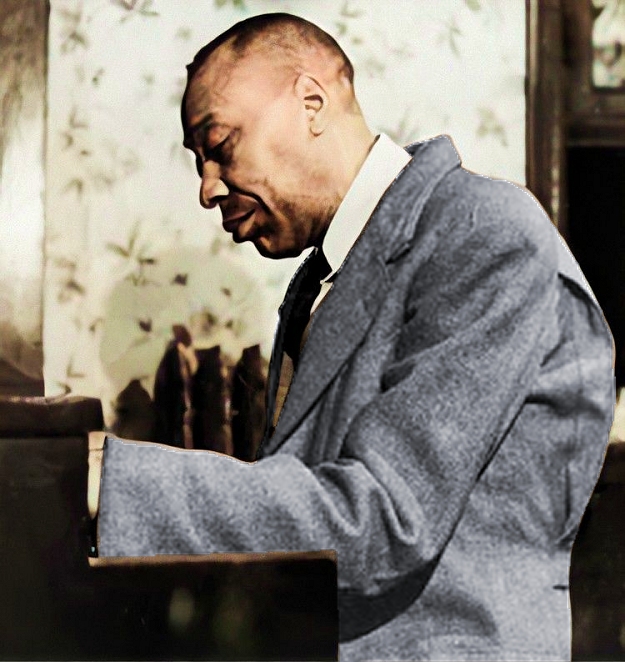 |
In spite of growing fame with his playing, Yancey was shown working in a woolen mill as were his older brothers Alonzo and Harry. Little is known about his activities between 1920 and 1925. He decided to take a little easier "day job" in 1925 as a groundskeeper for Comiskey Park, working for the Chicago White Sox team in that capacity until 1950, shortly before his death. Also in 1925 he married blues singer Estella Harris who he would remain with the rest of his life. While she often claimed to have been singing with Jimmy as early as 1913, this claim can be called into question as she was not found on any of the passenger lists of the same tours as Jimmy, and cannot be found as a singer in the 1920 census. She would soon give birth to James Yancey Jr..
Throughout the late 1920s and 1930s, Yancey played publicly and influenced many up and coming Boogie Woogie players, some of them his peers in age, including Clarence "Pine Top" Smith, who arrived in Chicago around late 1927, and Albert Ammons, and Meade "Lux" Lewis, both of whom had lived in Chicago most of their life. Ammons and Lewis acknowledged Yancey as their mentor and a strong influence. Yet while these three artists ended up recording on the increasingly popular race records of the time, even Smith shortly before his tragic early demise in 1929, Yancey evidently did not enter a studio until 1939, somewhat after the initial demand for Boogie Woogie recordings had temporarily subsided and a new wave was beginning. Jimmy had also been suffering from diabetes, and had his first stroke around 1936, temporarily sidelining him. Just the same, Lewis and Ammons had made him somewhat famous in advance through their recordings of the Yancey Special (either composed by Yancey or by Lewis in his style), causing boogie woogie fans to wonder aloud who Jimmy Yancey was. White bandleader Tommy Dorsey launched a series of arranged boogie-woogie sides, including Yancey Special, originally covered by the band of Bob Crosby in 1936 with the eclectic white pianist Bob Zurke at the piano. This caused a resurgence of interest in the genre among white and black music fans alike.
Yancey's first recordings on the short-lived Solo Art label, of which only two of eighteen sides done in one session were initially released, were highly anticipated and quickly well-received. He typically did no more than two takes on any of the pieces, and most often just one, a pattern that would be repeated in most of his recording sessions. When the first two sides were released it was then that the music-buying public learned of his infusion of deep blues into deep boogie, and his propensity to end the piece with a cadence of some kind in Eb,
no matter what key he had started the piece in, something which occasional caused a dissonant transition but made his playing easily identifiable. Jimmy's style also fed directly into Rhythm and Blues, influencing artists who were continuing the "race music" in a new direction in the 1940s.
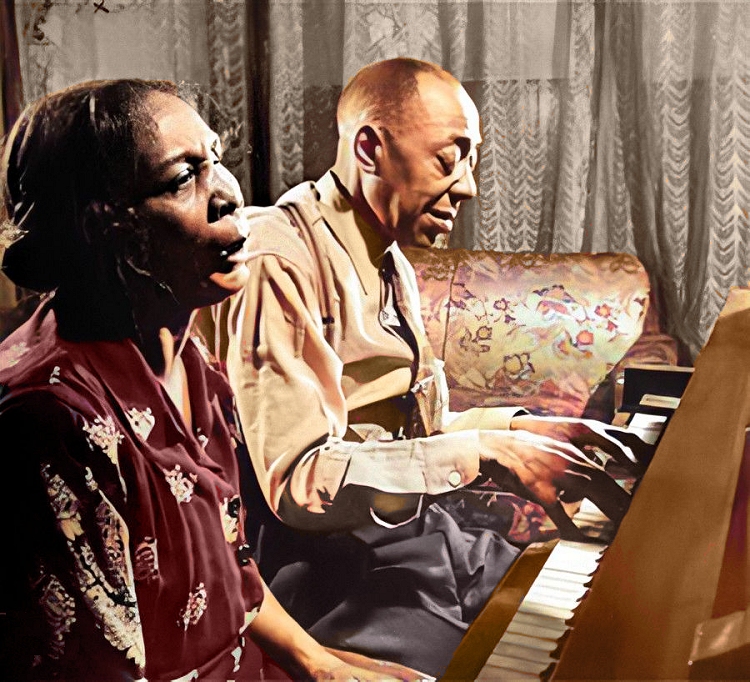 |
A follow-up effort of Yancey tracks was released on RCA Victor and more on their Bluebird label in 1940 and sales went very well. However, Yancey benefited little from them as he received poor financial deals for his recorded work, being paid outright rather than with royalties. More Bluebird sessions followed, as did some for the Brunswick race label Vocalion Records, some with singer Faber Smith. However, these did not sell nearly as well as his first batch. It was in the 1940s that some of the first casual recordings were made on a wire recorder of Yancey at parties, including two tracks on the electric organ (possibly a harmonium), an instrument he rarely approached. Alonzo also joined him on some of this tracks, although in more of a ragtime style. Jimmy's older brother also was apparently working in some capacity at Comiskey Park as well, since he lists the White Sox as his employer on his 1942 draft record. None was found for James, perhaps due to his medical condition. It was also around this time that Estella, now billed as "Mama" Yancey, started performing publicly with her husband. As of the 1940 census, taken in Chicago, Jimmy and Estella had Olivia Cook lodging with them, and in spite of his recent recording and performance work he listed himself (or the enumerator interpreted him) as a "janitor" at the baseball park, which of course was Comiskey Park.
In a 1941 interview featured on the AP wire service, Yancey talked about how he came up with his tunes. "I just sit down at my sister's piano - I never had one myself - and start pecking out something until it sounds good," he said. "I've sold quite a few numbers, but the one I like best is the 'Yancey Stomp'." As for his "day job," he stated, "It's been a good steady job and good people to work for, and I'm happy when I'm sweeping this old broom, rolling that old grass roller or rolling over that old piano." Then article concluded: "Jimmy occasionally is invited into the press-room, where he pounds out his stuff on an old upright. He doesn't think he'll ever go back into show-business, but might if the opportunity comes along." It would.
Some of the most memorable sides of Jimmy Yancey would be recorded in December of 1943, for local Chicago label Session Records. These were the among first tracks done for this small specialty label, which were released using a newer vinylite compound, giving them longer life and slightly better fidelity.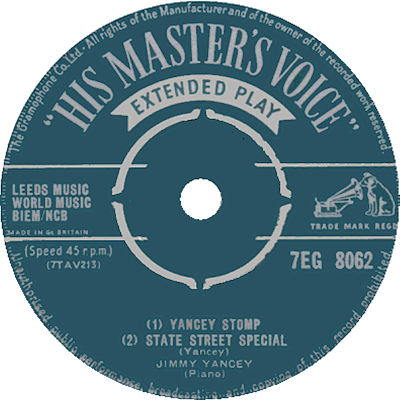 Phil Featheringill, who ran the lable, had also recorded Jimmy's brother Alonzo in October in a series of ragtime solos. Mama Yancey joined Jimmy on at least three of the 1943 tracks. The records were quickly snatched up by boogie-woogie enthusiasts. This may have been prompted by a resurgence of boogie-woogie popularity which started just before World War II, and many articles appeared in papers around the country citing the efforts of Yancey, Ammons, Lewis and Johnson in this style. There were some references to Tommy Dorsey and Bob Crosby as well, who had been helped out in previous years by Zurke, who also possessed a relatively robust boogie-woogie style. Zurke died in February of 1944, shortly followed by Alonzo on May 11.
Phil Featheringill, who ran the lable, had also recorded Jimmy's brother Alonzo in October in a series of ragtime solos. Mama Yancey joined Jimmy on at least three of the 1943 tracks. The records were quickly snatched up by boogie-woogie enthusiasts. This may have been prompted by a resurgence of boogie-woogie popularity which started just before World War II, and many articles appeared in papers around the country citing the efforts of Yancey, Ammons, Lewis and Johnson in this style. There were some references to Tommy Dorsey and Bob Crosby as well, who had been helped out in previous years by Zurke, who also possessed a relatively robust boogie-woogie style. Zurke died in February of 1944, shortly followed by Alonzo on May 11.
 Phil Featheringill, who ran the lable, had also recorded Jimmy's brother Alonzo in October in a series of ragtime solos. Mama Yancey joined Jimmy on at least three of the 1943 tracks. The records were quickly snatched up by boogie-woogie enthusiasts. This may have been prompted by a resurgence of boogie-woogie popularity which started just before World War II, and many articles appeared in papers around the country citing the efforts of Yancey, Ammons, Lewis and Johnson in this style. There were some references to Tommy Dorsey and Bob Crosby as well, who had been helped out in previous years by Zurke, who also possessed a relatively robust boogie-woogie style. Zurke died in February of 1944, shortly followed by Alonzo on May 11.
Phil Featheringill, who ran the lable, had also recorded Jimmy's brother Alonzo in October in a series of ragtime solos. Mama Yancey joined Jimmy on at least three of the 1943 tracks. The records were quickly snatched up by boogie-woogie enthusiasts. This may have been prompted by a resurgence of boogie-woogie popularity which started just before World War II, and many articles appeared in papers around the country citing the efforts of Yancey, Ammons, Lewis and Johnson in this style. There were some references to Tommy Dorsey and Bob Crosby as well, who had been helped out in previous years by Zurke, who also possessed a relatively robust boogie-woogie style. Zurke died in February of 1944, shortly followed by Alonzo on May 11.After World War II, Jimmy, who still maintained his groundskeeper job with the White Sox, found new fame, and was sought out by many recording firms large and small. He was even afforded an opportunity to play in Carnegie Hall in April of 1948 with New Orleans trombonist Edward "Kid" Ory, one of the key figures in the traditional jazz revival of the late 1940s. Yancey rarely recorded after 1943, and only laid down four vocal tracks in that time, including the famous Death Letter Blues. After Carnegie Hall he was offered a position at Chicago's Bee Hive Club where he played between stage acts for nearly three years. His last recordings were often done with Mama Yancey, billed as Jimmy and Mama Yancey on the label. She was clearly in charge in their relationship, known to be the dynamic smoking, swearing, drinking with the best of them diva while Jimmy remained quietly in the background like colorful musical wallpaper.
 As a result of his diabetes Jimmy finally had to leave his beloved job at Comiskey Park. The Yanceys had rent parties with their friends in their apartment to help keep them financially solvent, and fans would often hear about these and come to support him as well. The 1950 census showed Estelle working as a maid for another family, and the couple hosting a niece and nephew, both in their teens. Jimmy had no occupation listed, but was still playing. In 1951 Estella and Jimmy made the first recordings that launched the Atlantic Records label shortly after long-playing records were first marketed in 1949. Jimmy Yancey died September 17, 1951 of a diabetic stroke. A large jazz-based funeral was held for him the following week. Sometime after this the remaining sixteen sides of his first Solo Art session were posthumously released on the Circle label.
As a result of his diabetes Jimmy finally had to leave his beloved job at Comiskey Park. The Yanceys had rent parties with their friends in their apartment to help keep them financially solvent, and fans would often hear about these and come to support him as well. The 1950 census showed Estelle working as a maid for another family, and the couple hosting a niece and nephew, both in their teens. Jimmy had no occupation listed, but was still playing. In 1951 Estella and Jimmy made the first recordings that launched the Atlantic Records label shortly after long-playing records were first marketed in 1949. Jimmy Yancey died September 17, 1951 of a diabetic stroke. A large jazz-based funeral was held for him the following week. Sometime after this the remaining sixteen sides of his first Solo Art session were posthumously released on the Circle label.Mama Yancey continued to record for Atlantic and other labels until nearly the end of her life. With her in attendance, Jimmy Yancey was inducted into the Rock and Roll Hall of Fame in Cleveland, Ohio in 1986 for his major influences in the music styles that begat rock and roll. Later that year, Estella Yancey passed on at age 90. Fortunately the legacy of Jimmy Yancey lives on not only in his few recordings, all of which are available in digital formats, and most on YouTube, but in the performances of many current Boogie and Blues players such as Butch Thompson, Bob Milne, Neville Dickie and Carl "Sonny" Leyland.
This is only an overview of Yancey's life, peripheral to ragtime in most respects. Some of the recently uncovered information, particularly on his questionable birth date, was put forward by the late Mike Meddings on his extraordinary site, www.doctorjazz.co.uk which includes Yancey research by blues/stride pianist Butch Thompson. The more difficult aspects of finding the obscure records on Yancey should be attributed to researcher Jane M Bowers who traced Yancey's mother through Chicago records in order to locate the family in the poorly misrepresented 1920 census listing. The rest of the content comes from public records or general research from multiple corroborative sources. The remaining speculation on his birth year and other discoveries on Yancey were researched by the author in public records and periodicals.
Also note that authorship of the composition The Fives has been disputed by some researchers, with contemporary attributions to Boogie performers, brothers Hersal Thomas and George Thomas who provide good evidence to support their case. This is why it is not included as one of Yancey's compositions, and only as a recording.
 Compositions/Selected Discography
Compositions/Selected Discography